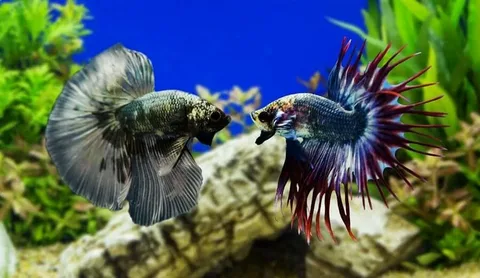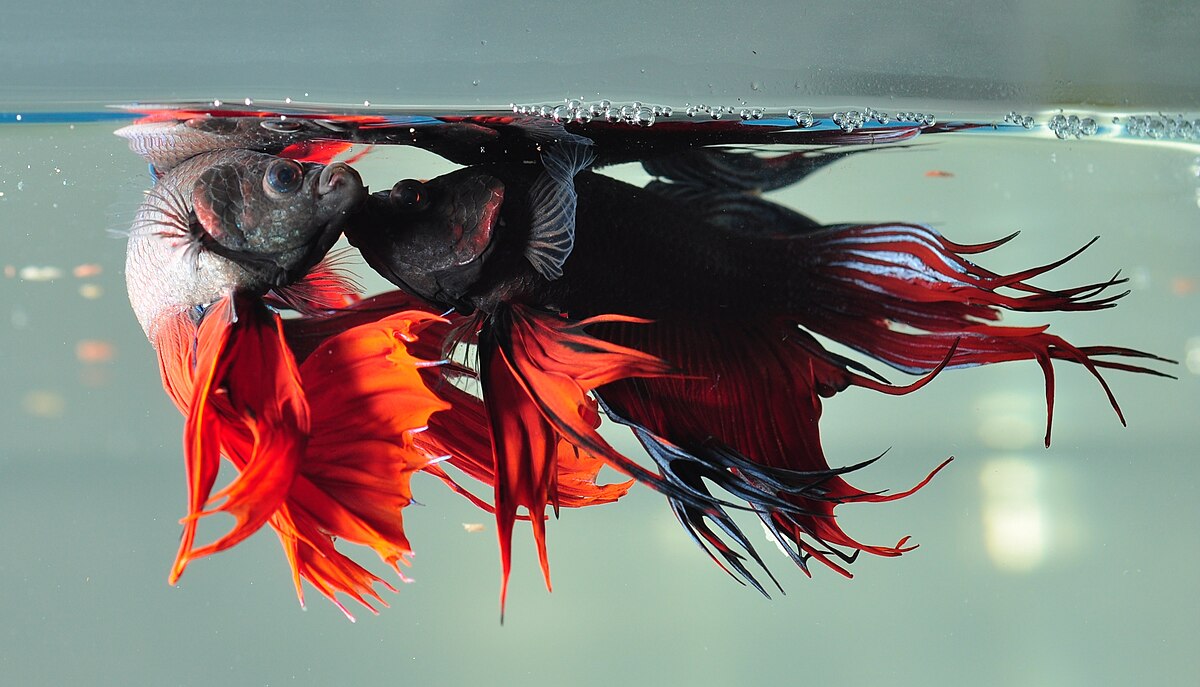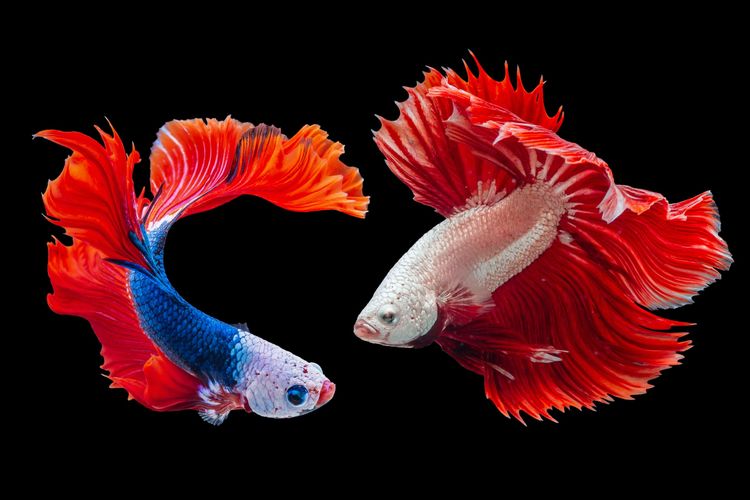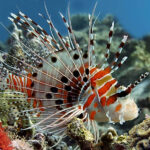Fish Fight. It’s a photo of tranquillity—until, bam. One fish attacks another. Fins flare, tails lash, and that calm tank becomes a war zone. Why? Why do fish fight? Although they may seem peace-loving most of the time, fish are actually quite aggressive, and their fights are not haphazard. Their fish fights usually has three principal causes: territorial conflict, competition for mating, and aggression due to stress. This article explores each cause in depth, revealing the behavior of fish and how to restore peace in your tank.

The Wild Within—Understanding Fish Fight Aggression
Fish Flight, like all animal flights, is controlled by instinct. Be they cichlids in Lake Malawi or guppies in a domestic aquarium, their action is based on millions of years of evolution. Fighting doesn’t always equal cruelty—it frequently equals survival.
Aggression in fish may be innate (instinctual) or environmental (reaction to the environment). Knowing why aggression exists is the key to stopping it.
Types of Aggression:
Territorial aggression—defending an area.
Mating aggression—rivalry for mates or dominance.
Stress aggression—unsatisfactory water quality, overcrowding, or incompatible species.
Let’s discuss each of these causes in detail.
It’s My Turf—Territorial Aggression
Territory is everything to some fish. A cave, a plant, a whole area of the tank, whatever -many fish require their own personal space.
Species Prone to Territorial Behavior
Cichlids (Oscars, African cichlids, Convicts)
Betta fish
Damselfish
Gobies
Angelfish
They are usually solitary or hierarchical and will fiercely defend their territory.
How Territory Triggers Conflict:
If a fish lays claim to a space, it will become hostile to any intruder. Rivals in nature would have swum away. But in an enclosed tank, escape is frequently not possible, and so there will be repeated combat.
Signs of Territorial Aggression:
Chasing or nipping at other fish.
Flaring fins or puffing up.
Stationing themselves at one spot and attacking passersby.
Prevention Tips:
Provide hiding spaces: rocks, caves, plants, and decorations, giving fish places to claim and reducing competition.
Tank size matters: A larger tank dilutes aggression by giving each fish more space.
Choose compatible species: Don’t mix multiple territorial fish unless you’re experienced.
Rearrange decor: Resetting the tank’s layout can reset territorial boundaries, especially after introducing new fish.

The Love Brawl—Mating and Reproductive Aggression
Romance is seldom tender in the world of fish fight. Breeding can spur violent behavior between competitors and spouses.
Mating-Related Aggression:
Male-to-male fighting: Males frequently engage in combat to achieve dominance and rights to breed.
Male-to-female aggression: In certain fish, males actively pursue females vigorously during courtship.
Parent defence: Some defend their eggs or fry aggressively.
Species Examples:
Betta Splendens: Males are infamous for killing each other when competing for territory or mates.
Livebearers (guppies, mollies): Males constantly pursue females, sometimes causing stress or injury.
Convict Cichlids and Angelfish: Become ultra-aggressive during spawning, attacking anything near their nest.
How to Reduce Mating Aggression:
Keep proper gender ratios: In livebearers, a 1:2 or 1:3 male-to-female ratio helps reduce female stress.
Use breeding tanks: Isolate mating pairs to prevent widespread aggression.
Provide hiding spots: Plants and caves allow chased fish to rest and recover.
Observe carefully: Remove the fish if aggression becomes too intense.
A Pressure Cooker—Stress and Its Role in Fish Fights
All aggressive fish fight are hormonal or territorial. Some is survival aggression under duress.
Common Stress Triggers:
Overcrowding
Poor water quality
Incorrect temperature or pH
Too little hiding space
Improper diet
Incompatible tank mates
When the fish get fearful, pinned down, or are in discomfort, their stress goes up—and stress tends to induce erratic, aggressive behavior.
Fish Species Sensitive to Stress:
Tetras and Rasboras prefer groups and specific conditions.
Discus fish (require stable, warm, soft water)
Goldfish (easily stressed by poor water or crowding)
Warning Signs of Stress:
Sudden aggression in normally peaceful species.
Hiding or swimming frantically.
Gasping at the surface.
Clamped fins and faded coloration.
Fixing the Stress:
Check water parameters: Use test kits to monitor ammonia, nitrites, nitrates, pH, and temperature.
Increase tank size or reduce fish count.
Improve oxygenation: Add air stones or increase filtration.
Quarantine new fish: Prevent disease and stress spread.
Feed a varied, high-quality diet.

Creating a Peaceful Aquarium
Preventing fish fights is half science and half art. A well-maintained tank is a harmonious one. Here’s how to create peace of mind from the beginning:
Research Before Buying
Know the aggression level, territory size, diet, and temperature preferences.
Avoid putting aggressive and peaceful species together.
Quarantine New Fish
Introduce fish gradually.
Watch for aggressive behavior in the first 48 hours.
Add Fish in Groups or All at Once
Adding fish at the same time avoids giving early arrivals too much territory.
Use Tank Dividers When Necessary
Especially for bettas or cichlids.
Temporary dividers help during breeding or when introducing new tank mates.
Monitor Behavior Daily
A few minutes of observation a day can prevent fights from escalating.
When All Else Fails—Solutions for Chronic Aggression
Even with the best planning, some fish fights are simply incompatible. Ongoing aggression might call for more drastic measures.
Options to Consider:
Rehoming: Sometimes the only solution.
Species-only tanks: Some fish, like African cichlids, do better with only their kind.
Breeding tanks: Set up a separate space for mating or territorial fish.
Community tanks with schooling fish: Larger groups confuse aggressors and diffuse tension.
Real Stories from Fishkeepers
Let us hear from enthusiasts who’ve had fish fights and solved them.
Anna, age 32—Betta Troubles:
“I had a female betta sorority. It was serene for two weeks, then anarchy broke out. I learned I needed to add more hideaways and remove one particularly mean female.”
Dave, age 45—Oscar the Menace:
“My Oscar would nip every new fish. I finally caved and got him a 75-gallon tank and gave up on a community setup. Now he’s content, solitary, and regal.”
Leah, 28—Neon Tetra Stress:
“My tetras were nipping each other until I bumped the school from 5 to 10. Immediately, they relaxed. Schooling does make a big difference.”

Conclusion
Fish fight aggression isn’t random or nasty—it’s frequently a communication technique, a signal that something is amiss with their environment, instincts, or social hierarchy. Whether it’s a betta fighting over territory, a cichlid at the height of mating season, or a frazzled tetra attacking due to poor water conditions, there’s always something behind the act.
As aquarists, our work is half scientist, half artist. We must watch, fine-tune, and even intervene to see that our aquatic pets are thriving, not merely surviving. That involves knowing the underlying reasons fish fight—territory, mating, and stress—and acting with considered tank design, species choice, and care tactics.
And when that equilibrium is upset, aggression is usually the first warning sign. Pay attention to it. Learn from it. Because when you know why your fish are fighting, you’re not only fixing a problem—you’re building a thriving aquatic environment where every fish has space to swim, a place to hide, and peace to live.
FAQs
Is it normal for fish to fight sometimes?
Fish Fight Mild chasing or nipping is acceptable at times, particularly while eating or during the establishment of the pecking order. Aggressive or repetitive attacks, however, usually indicate territorial problems, mating behavior, or stress, and must be solved in a timely manner.
What are the most aggressive freshwater fish?
Aggressive species common among aquarium fish are bettas (males), African cichlids, Oscars, red-tailed sharks, and certain gouramis. Such fish tend to require special conditions and tankmates in order to not fight.
How do I know if a fish is being bullied?
Observe for indications such as injured fins, always hiding, loss of appetite, pale color, or erratic swimming. A harassed fish might also remain near the surface or at the bottom to keep away from harassers.
Should I separate fighting fish?
If there is ongoing aggression or injury, it’s a good idea to isolate the bullying or aggressive fish fight. Install a tank divider or a quarantine tank to minimize stress and evaluate compatibility.
Will rearranging the tank help stop fights?
Yes. Redecorating hiding places and decorations can “reset” territorial boundaries and decrease aggression, particularly after the addition of new fish.
How do I stop male fish from fighting over females?
Keep the proper male-to-female ratio (usually 1:2 or 1:3), have lots of cover, and don’t overcrowd. In some instances, males should be separated or a breeding tank established.










